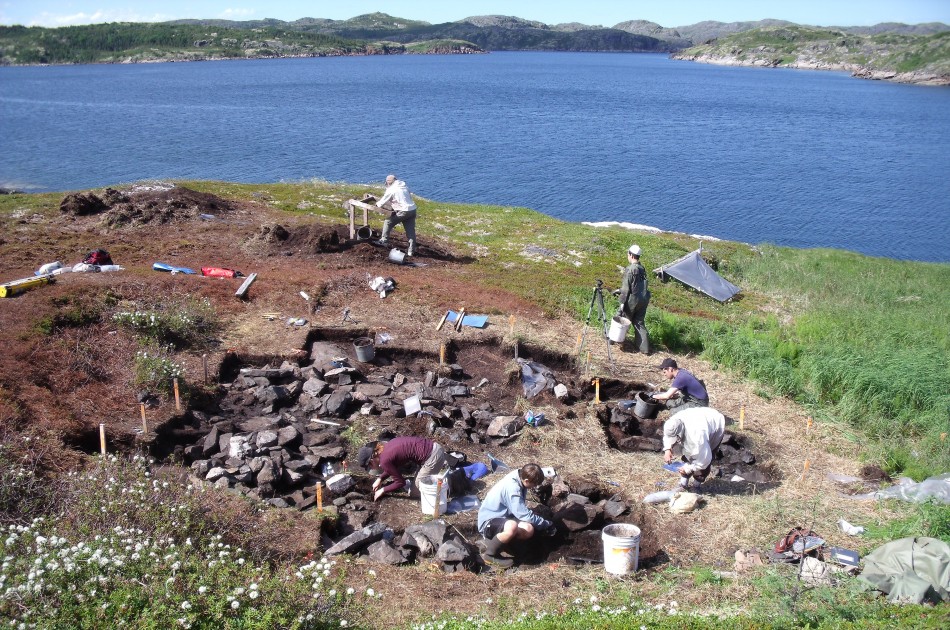![]()
Personal ornamentation was a hallmark of Inuit culture in Labrador and in the eastern Arctic, and was tied to tenets of personal appearance, to messaging an individual’s wealth and inter-cultural contacts, and was a practical way of keeping on one’s person the symbols and talismans of spiritual life. Ornamentation ranged from bodily tattoos to objects applied to clothing. With increased contact, objects of European manufacture were adapted as ornamentation. Brass was shaped into headbands, and beads were made into elaborate ear pendants [see the Inuit portraits in Stopp 2009]. Somewhat unusual objects such as spoon bowls, bale seals, and coins were also adapted as clothing ornamentation. As these replaced traditional decor, they may have been conferred with the same symbolic meanings or associations formerly accorded to organic ornaments such as teeth, bone fragments, and feathers.
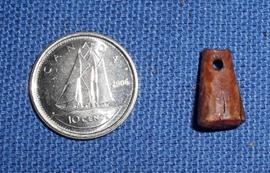 An ivory or tooth pendant. (FeAx-3:281)
An ivory or tooth pendant. (FeAx-3:281)
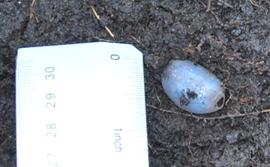 Lavender-hued, wound, glass bead, probably type WIc2 in Kidd and Kidd (1972). K. Karklins (pers. comm. Sept. 2011) notes that this type of bead is sometimes called a “pigeon egg” and has a date range of 1670-1869 and a period of high use ca. 1740. (FeAx-3:165)
Lavender-hued, wound, glass bead, probably type WIc2 in Kidd and Kidd (1972). K. Karklins (pers. comm. Sept. 2011) notes that this type of bead is sometimes called a “pigeon egg” and has a date range of 1670-1869 and a period of high use ca. 1740. (FeAx-3:165)
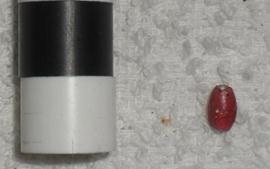 A tiny bead resembling Kidd and Kidd (1972) IVa4, redwood colour with light grey interior. (FeAx-3:402)
A tiny bead resembling Kidd and Kidd (1972) IVa4, redwood colour with light grey interior. (FeAx-3:402)
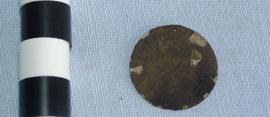 Two of these coins were found. A small drilled hole at the top edge suggests that it served as a pendant, probably sewn onto clothing. This coin was known as a double sol, a “30 denier” or “deux livres” and was made for the colonies of “billion” or copper/silver alloy. It dates to 1710-1713. (FeAx-3:159)
Two of these coins were found. A small drilled hole at the top edge suggests that it served as a pendant, probably sewn onto clothing. This coin was known as a double sol, a “30 denier” or “deux livres” and was made for the colonies of “billion” or copper/silver alloy. It dates to 1710-1713. (FeAx-3:159)
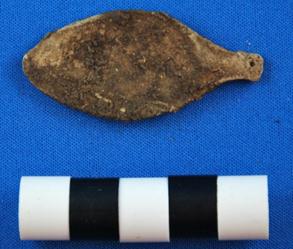
Two spoon bowls were recovered. Note the small drilled hole at the stem base. Karlis Karklins in Trade Ornament Usage Among the Native Peoples of Canada (pg. 197) illustrates how spoons were used by Inuit women to decorate their amautis. (FeAx-3:575)
M. Stopp, The St. Michael’s Bay Archaeology Project and Southern Labrador Inuit Research (2013).
